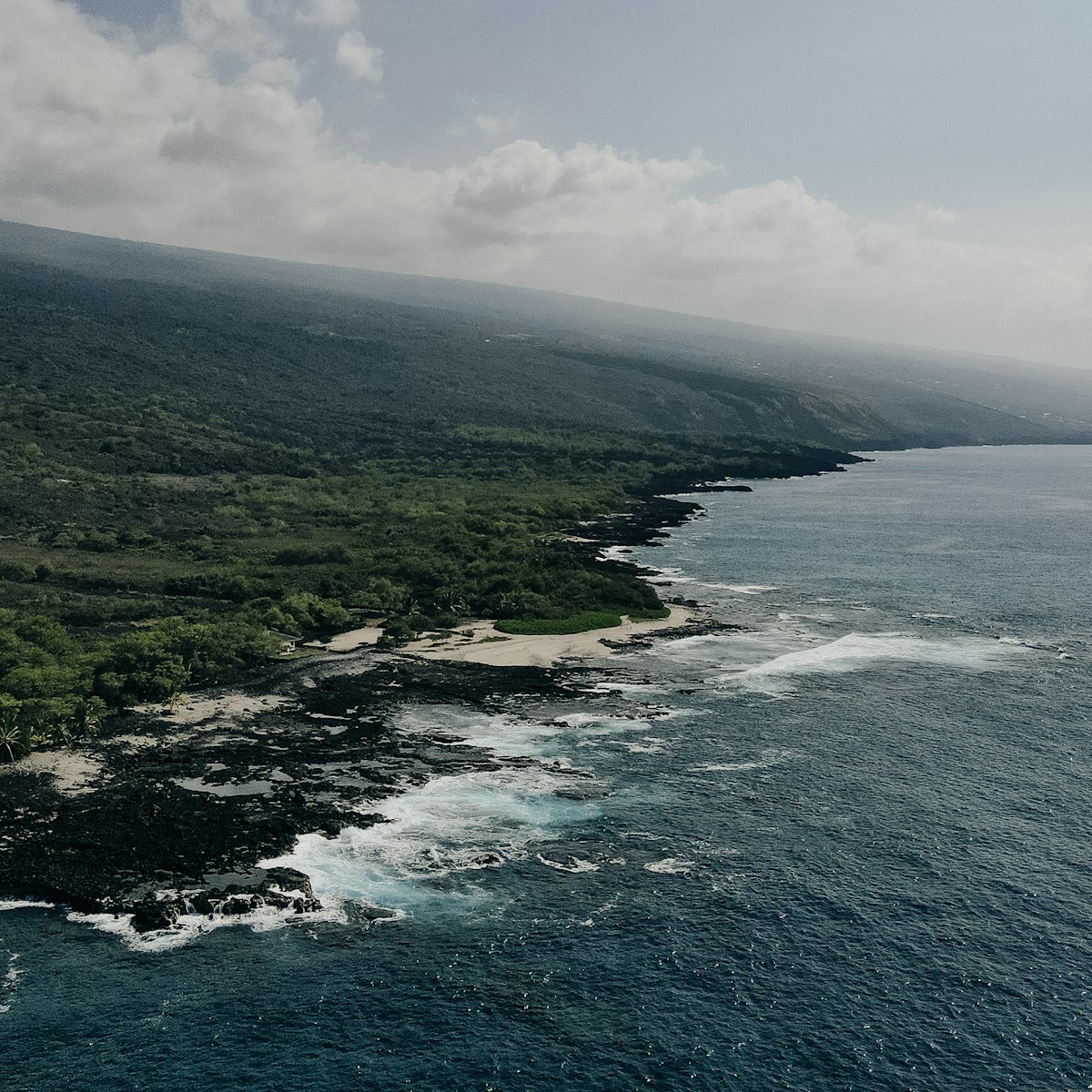Be sure to get your bearings at the Hwy 11 viewpoint perched on a 1907 lava flow. Commanding views take in Paliʻokulani, the ragged cliff edge jutting out in front of South Point which protects eastern Kaʻu from Mauna Loa's Southwest Rift Zone lava flows. The fault extends far out to sea where the underwater cliffs eventually reach almost 1 mile high. Recent submarine geology expeditions to these pali (cliffs) have determined Mauna Loa has been active for at least 650,000 years.
At the base of Paliʻokulani (also sometimes called Kahuku Pali) the ancient settlement of WaiʻAhukini was one of the longest inhabited areas on the island until the 1868 tsunami changed residents' minds. Archaeological studies of fish hooks found there prove that the earliest settlers did indeed come from the Marquesas Islands.
Further west along the shore, Puʻu Hou is a fine example of a littoral cone formed over five days during the 1968 eruption as lava explosively mixed with water, building a loose pile of spatter and bombs. Littoral cones are not found on any other Hawaiian island due to their fragile structure and proximity to eroding waves.






